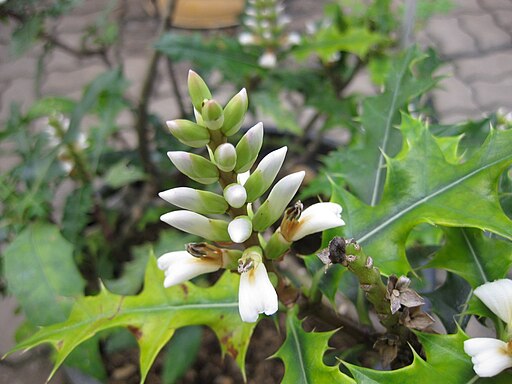Classification System: APG IV
Superregnum: Eukaryota
Regnum: Plantae
Cladus: Angiosperms
Cladus: Eudicots
Cladus: Core eudicots
Cladus: Asterids
Cladus: Lamiids
Ordo: Lamiales
Familia: Acanthaceae
Subfamilia: Acanthoideae
Tribus: Acantheae
Subtribus: Acanthinae
Genus: Acanthus
Species: Acanthus ebracteatus
Subspecies: A. e. subsp. ebarbatus – A. e. subsp. ebracteatus
Name
Acanthus ebracteatus Vahl, 1791
References
Vahl, M., Symbolae Botanicae, . . . 2: 75, t. 40. 1791.
Links
Hassler, M. 2018. Acanthus ebracteatus. World Plants: Synonymic Checklists of the Vascular Plants of the World In: Roskovh, Y., Abucay, L., Orrell, T., Nicolson, D., Bailly, N., Kirk, P., Bourgoin, T., DeWalt, R.E., Decock, W., De Wever, A., Nieukerken, E. van, Zarucchi, J. & Penev, L., eds. 2018. Species 2000 & ITIS Catalogue of Life. Published online. Accessed: 2018 Jun. 08. Reference page.
International Plant Names Index. 2018. Acanthus ebracteatus. Published online. Accessed: Jun. 08 2018.
The Plant List 2013. Acanthus ebracteatus in The Plant List Version 1.1. Published online. Accessed: 2018 Jun. 08.
Tropicos.org 2018. Acanthus ebracteatus. Missouri Botanical Garden. Published online. Accessed: 08 Jun. 2018.
Vernacular names
English: sea holly, holly mangrove
Acanthus ebracteatus is a species of shrubby herb that grows in the undergrowth of mangroves of south-east Asia. Common names include sea holly and holly mangrove.
Description
It grows as an erect, spreading or scrambling shrubby herb, up to 1.5 metres tall, usually with a great many stems. Its leaves are dark green, stiff, with sharp spines at the end of each deep lobe: very much like those of holly (Ilex). Flowers are blue, purple or white, and occur in spikes terminal on the branches. The fruit is a square-shaped capsule, which explodes when ripe, projecting the seeds up to two metres from the plant. Seeds are off-white and flat.
Taxonomy
This species was first described by Martin Vahl in his 1791 Symbolae Botanicae. In 1806 Christiaan Persoon transferred it into Dilivaria, but this was not accepted.
Two subspecies are recognised, the autonym A. ebracteatus subsp. ebracteatus, and A. ebracteatus subsp. ebarbatus, described in 1986.
Distribution and habitat
It occurs in the undergrowth of mangroves in south-east Asia, including northern Australia.
Medicinal uses
The leaves of Acanthus ebracteatus, noted for their antioxidant properties, are used for making Thai herbal tea in Thailand and Indonesia.[1]
References
Chan, E.W.C.; Eng, S.Y.; Tan, Y.P.; Wong, Z.C.; Lye, P.Y.; Tan, L.N. (2012). "Antioxidant and Sensory Properties of Thai Herbal Teas with Emphasis on Thunbergia laurifolia Lindl". Chiang Mai J. Sci. 39 (4): 599–609.
"Acanthus ebracteatus Vahl". FloraBase. Western Australian Government Department of Biodiversity, Conservation and Attractions.
"Acanthus ebracteatus Vahl". Australian Plant Name Index (APNI), IBIS database. Centre for Plant Biodiversity Research, Australian Government.
http://mangrove.nus.edu.sg/guidebooks/text/1045.htm
Retrieved from "http://en.wikipedia.org/"
All text is available under the terms of the GNU Free Documentation License


